
Rubryka explains how to become a potential bone marrow donor and how the donation process itself goes.
What is the problem?
There are about 30 diseases for which haematopoietic stem cells (in simple words, bone marrow) are considered to be almost the only source of patient salvation. These are acute leukemia, multiple myeloma, plasma cell leukemia, Hodgkin's lymphoma, non-Hodgkin's lymphomas, L-amyloidosis, and POEMS syndrome. Also, bone marrow transplantation is the only radical way to treat most of the most severe types of primary immunodeficiency.
Such transplantation can be carried out from a relative (a smaller number of cases, approximately 25%) and a non-relative donor. The main component for transplantation from unrelated donors is the registry of potential donors.
Every year in Ukraine, up to 150 children need a bone marrow transplant, up to 100 of them from a non-family donor. There is a great need for such operations among adults as well.
What is the solution?
Bone marrow transplantation is developing in Ukraine. Such surgeries are carried out in eight centers. For example, from January to May 2023, 123 stem cell transplants were performed in these hospitals, 23 of them to children.
"The question is that the greater the number of donors, the greater the probability that our patients will find their donor in Ukraine," emphasized Oleksandr Lysytsia, a specialist of one of these centers, an onco-hematologist, head of the bone marrow transplantation department of the National Academy of Medical Sciences " Okhmatdyt."
In 2020, Ukraine adopted a decision that made it possible to search for donors in the world registry — the World Marrow Donor Association (WMDA). Currently, there are more than 41 million potential donors in the world registry.

Screenshot from the official website of the world registry of potential donors of hematopoietic stem cells.
The need to create a state information system for hematopoietic stem cell transplantation was also announced. As of July 2023, regulations on such a system have been developed. At the time of preparation of this material, the Cabinet of Ministers of Ukraine has not yet approved it.
In 2020, the state also determined that the search for donors in the world registry can be done with the help of non-state registries that are members of the World Association of Bone Marrow Donors and have the right to search in the world registry.
Since 2018, there has been such a public solution in Ukraine — the Ukrainian Register of Bone Marrow Donors charity fund. As of October 20, 2023, it had 10,707 potential bone marrow donors. The Ukrainian registry cooperates with the world registry and is included in the list of world registries of bone marrow donors.
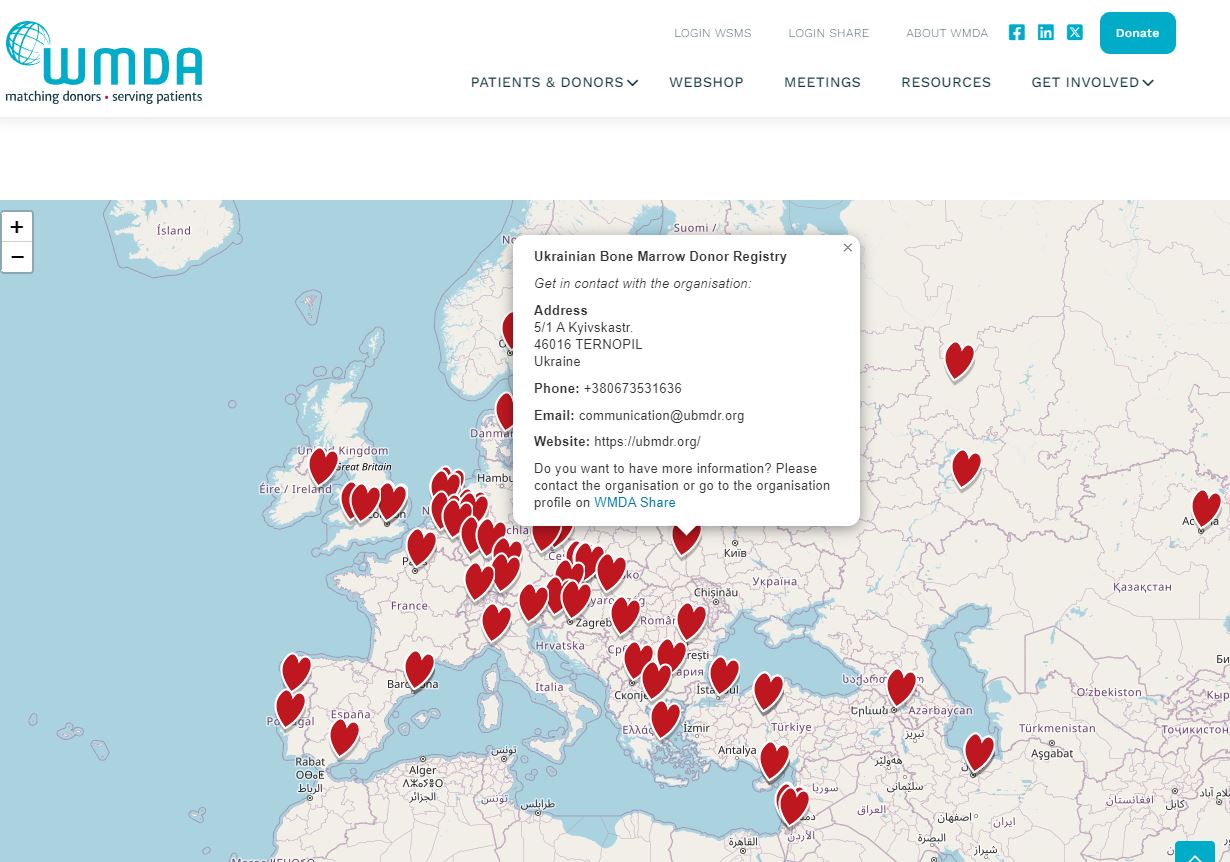
On the screenshot: Ukrainian register on the world map / Screenshot from the website wmda.info
What are the examples?
In 2023, a Ukrainian donor was found for the first time for a Ukrainian patient
This year, for the first time in Ukraine, a bone marrow transplant was performed from a non-family donor, who was found in Ukraine thanks to this registry. An unknown Ukrainian (the identity will not be disclosed for two years) gave a chance to Oleh Shevchenko, 18 at the time, from Pavlohrad.
One recent example is the case of 51-year-old Serhiy from Cherkasy, who got a chance for recovery. He received a transplant from a 38-year-old woman from Germany thanks to the cooperation of the Ukrainian registry with the international one.
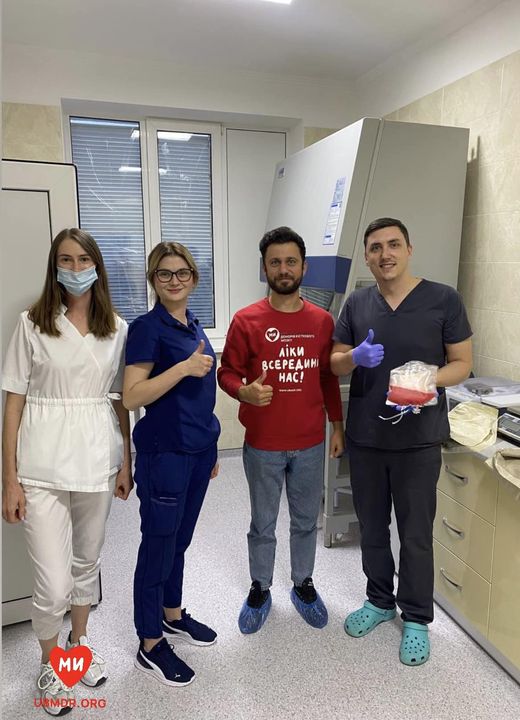
In the photo: Specialists and a patient of the Cherkasy Clinical Oncology Center. Photo from the Facebook page of the Ukrainian Register of Bone Marrow Donors
How does it work?
The register is a public matter
The Ukrainian Register of Bone Marrow Donors charity fund was created by the spouses, Roman and Yuliia Kuts, after Yulia also faced the need for a bone marrow transplant. She was successfully operated on in Poland, her own brother being the donor. This experience showed a huge field for work in Ukraine, which the registry has conducted since 2018. As an example, they took such a German registry. For the most part, registries of potential bone marrow donors worldwide are also not state but public initiatives.
The first registry in the world was created in 1974 in Great Britain due to a search by a mother, Shirley Nolan, for a donor for her son. Unfortunately, her child died, but the initiative founded by Shirley gave a chance to four thousand people.
How to become a potential donor
The most optimal age is from 18 to 35 years
People aged 18 to 35 are most suitable for bone marrow donation. Younger people have fewer illnesses, are usually in better general physical condition, and are available to search for longer periods. In addition, the younger the donor, the better the recovery for the patient.
That is why volunteers of the Ukrainian Bone Marrow Donor Registry conduct much educational work among student youth. One of these events recently occurred in the Kyiv Polytechnic Institute. Rubryka also attended the event.
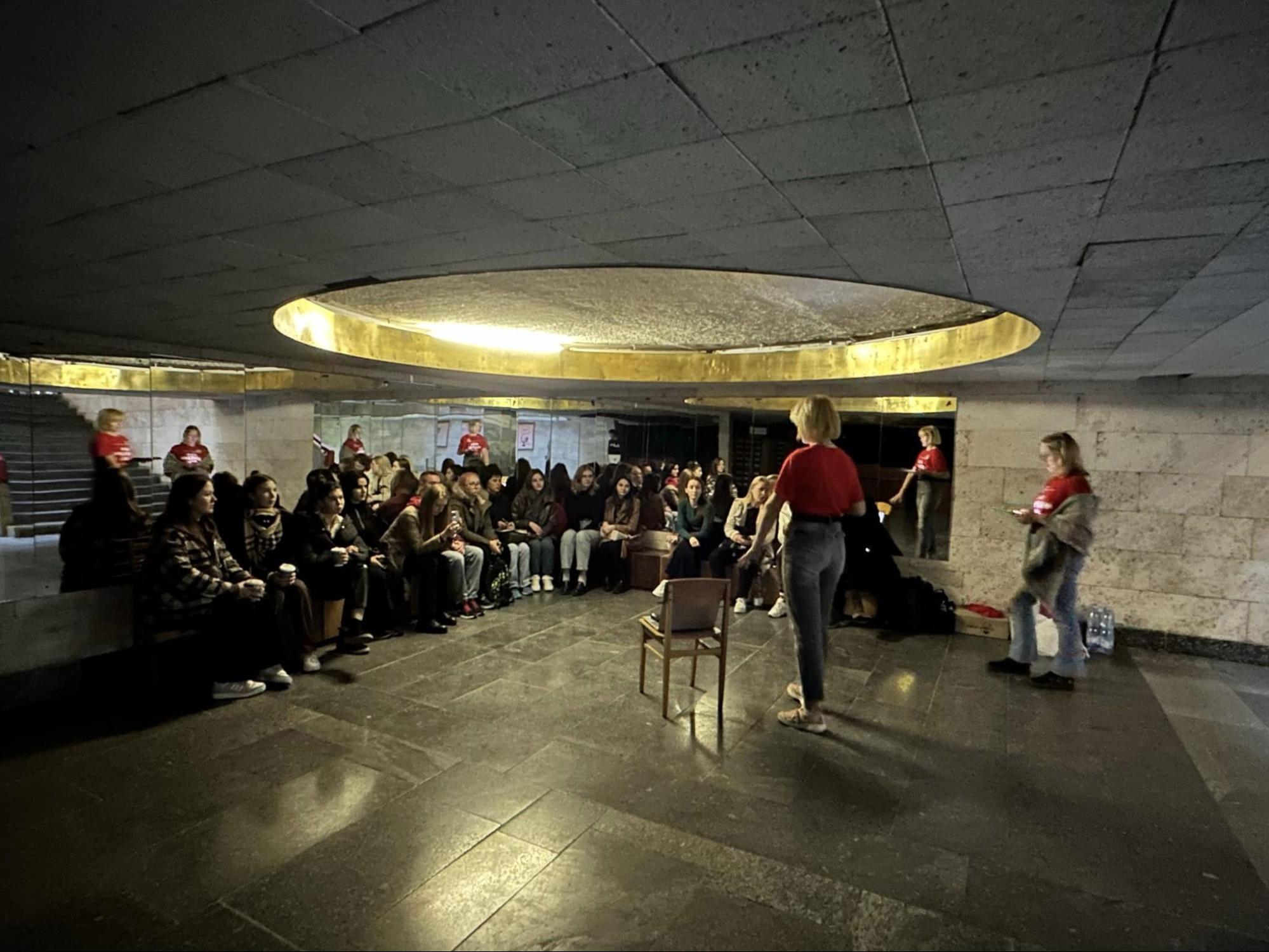
In the photo: Lecture on bone marrow donation in the KPI shelter. Photo from the Facebook page of the Ukrainian Register of Bone Marrow Donors
Due to the air alarm, the event was slightly delayed and took place in a shelter, but this did not prevent a dozen or so students from listening attentively to their fellow volunteers. About two-thirds of them became potential donors just after the event.

In the photo: Participants of the event at KPI. Envelopes are held by those who have volunteered to become a potential donor. Photo from the Facebook page of the Ukrainian Register of Bone Marrow Donors
As the lecturer Sofiia Kropelnytska noted, the ideal donor is an 18-year-old boy.
"It's probably easier to find a boyfriend," said one of the girls in the hall.
This is true because, for a successful transplant, the donor must have ten HLA parameters identical to the recipient's. The HLA system, or human leukocyte antigen system, is an integral part of the human immune system. More than 15,000 HLA indicator values are known, meaning 50 million possible combinations exist.
What to do if you're younger than 18 years old? You can register, but such a person will become active in the donor search database only after reaching the age of majority.
What do you do if you're 35-45 years old? You can also register, but you must pay €35 for a DNA test of your saliva sample. Currently, these tests are not done in Ukraine, so the sample is done in the German laboratory. Everyone registered can be a donor until they turn 60.
What are the restrictions for donation?
Contraindications for donating hematopoietic stem cells are similar to contraindications for normal blood donation.
You cannot be a donor if:
- your weight is less than 50 kilograms,
- have severe obesity BMI >40,
- if you have a chronic or serious illness.
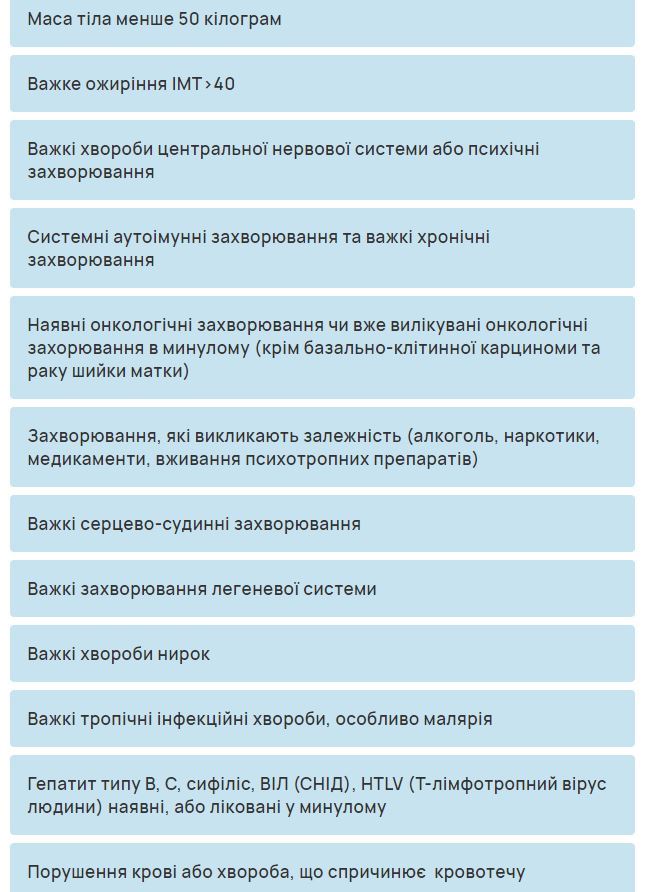
List of contraindications to bone marrow donation / Screenshot from the website of the Ukrainian Register of Bone Marrow Donors
If you are pregnant, you can take a DNA test and become a potential donor, but you cannot donate directly.
If you come and want to register
If you have no contraindications but there is a desire to help, then
- first of all, you need to go to the website of the Ukrainian Register of Bone Marrow Donors and leave an application there,
- you will be sent an envelope with a questionnaire and equipment for collecting your saliva for a DNA test,
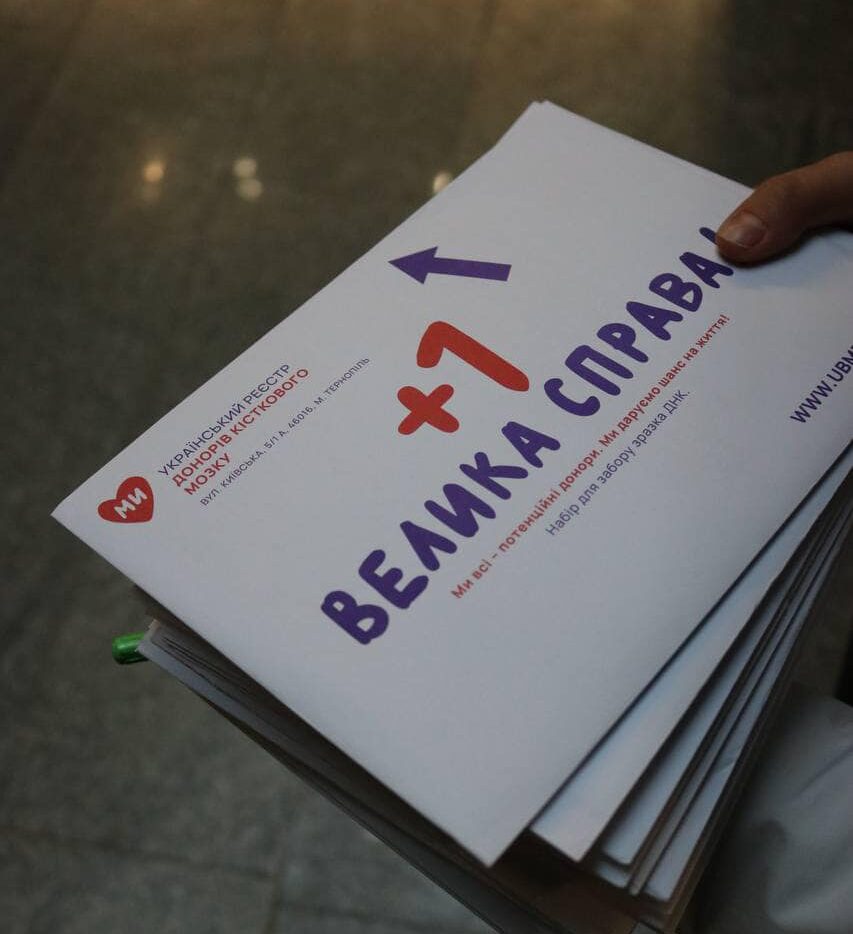 This is what an envelope with a kit for registering as a potential donor looks like. Photo from the Facebook page of the Ukrainian Register of Bone Marrow Donors
This is what an envelope with a kit for registering as a potential donor looks like. Photo from the Facebook page of the Ukrainian Register of Bone Marrow Donors
- you will do a test: rub the sticks from the set behind your cheeks and send them in an envelope to the registry address. If you are 35-45 years old, then you will also pay for the examination of your sample

Screenshot from the presentation of the Ukrainian Register of Bone Marrow Donors
- your sample will be tested in a German laboratory, and you will be entered into the register.
- the waiting period for direct donations will begin. It may last for years, or it may be that the patient is not found at all,

Screenshot with the algorithm of actions from the website of the Ukrainian registry of bone marrow donors
- if a patient is found, you will be contacted and asked if you are still willing to be a donor,
- if you have any contraindications at that time (this includes pregnancy and two years after childbirth), you will not become a donor,
- if your state of health does not change at that time, you will be offered a more detailed examination (it is free for donors), and after, they will check again whether you have changed your mind about becoming a donor,
- if the doctors confirm your ability to donate, you will come to the medical center to your recipient (the registry will pay for the trip), and the doctors will start preparing you for the donation.
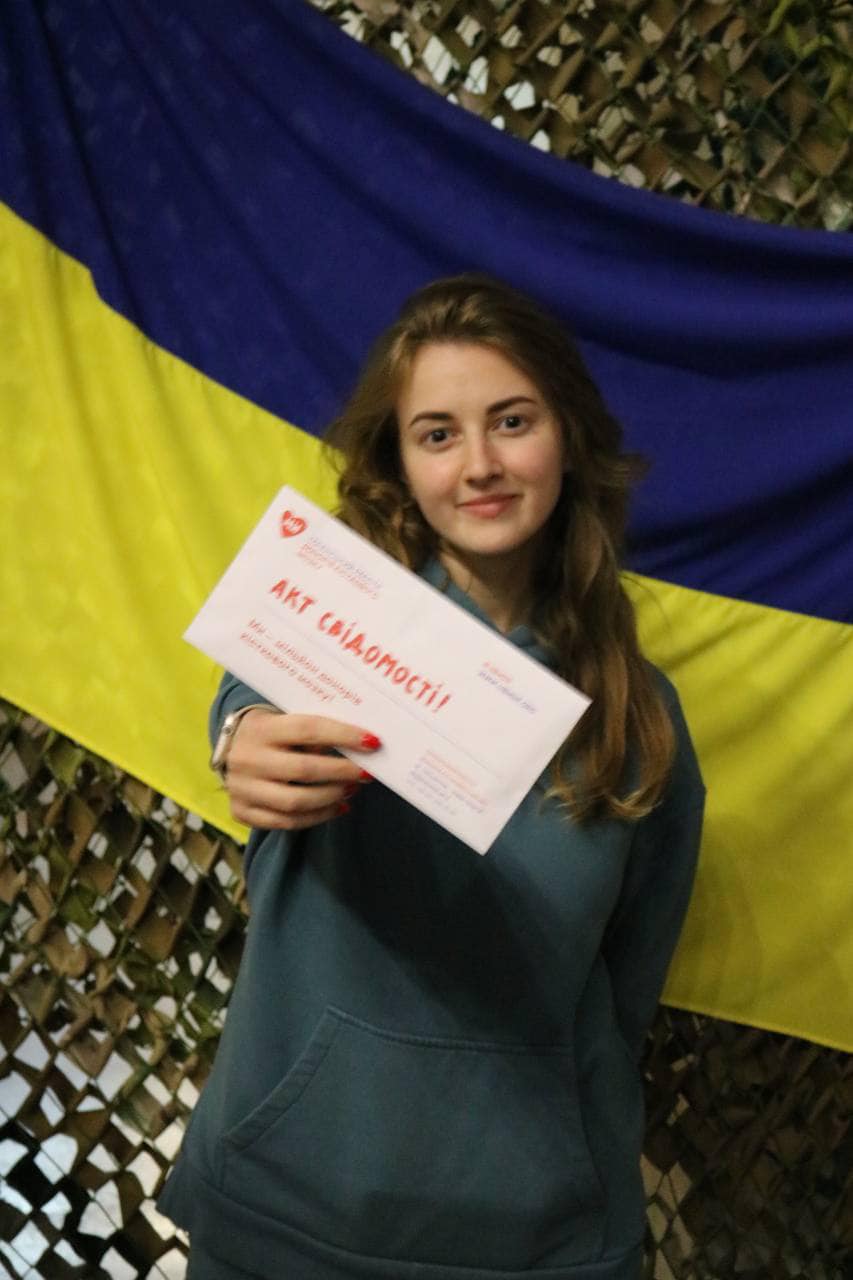
In the photo: A student who joined the register of potential stem cell donors. Photo from the Facebook page of the Ukrainian Register of Bone Marrow Donors
How does bone marrow donation work?
Two options and choice by donor
There are two ways to donate — your doctor may recommend one of them, but in the end, the choice is still yours.
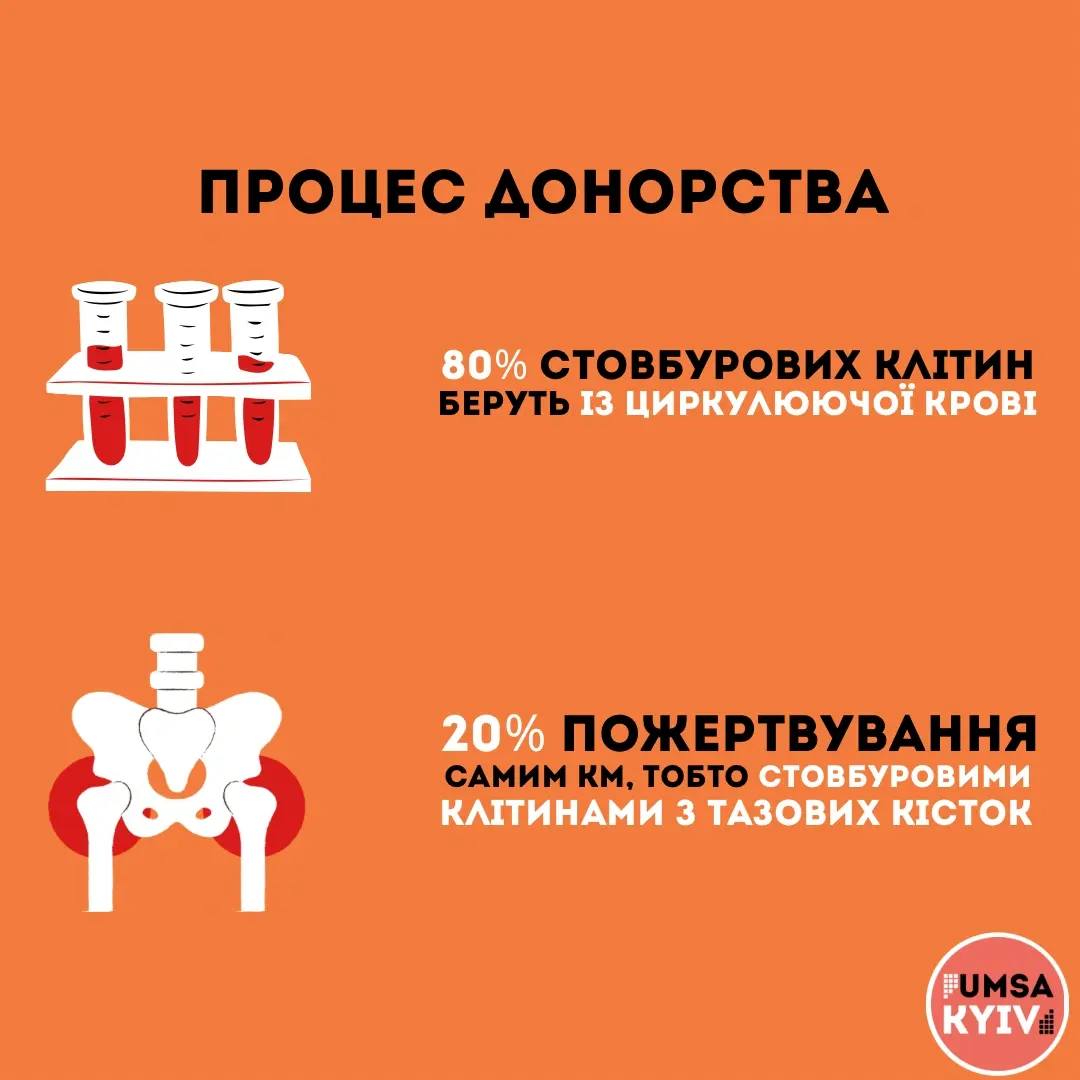
Illustration from the UMSA.Kyiv Facebook page
- Donation of stem cells from circulating blood
For five days, the donor is injected with a special drug that significantly increases the number of stem cells in the blood. On the fifth day, a blood test is done to check the number of circulating stem cells. If everything is ok, a donation is made.
Here, the donor will be asked again if they are not against becoming a donor, and if they refuse, then the patient, unfortunately, may no longer have a chance to be saved. This happened in the practice of the world registry, and it led to the patient's death. Often, a donor's refusal at the last moment does not allow further treatment. Therefore, your donation should be a well-considered decision.
Further, this procedure is almost nothing new for those who have donated platelet mass.
You will be connected to a special machine (a cell separator) that takes blood through a vein in one arm, filters out the stem cells, and returns the blood to the body through a vein in the other arm.
This takes three to five hours, depending on how many stem cells are obtained. General anesthesia and further hospital stays are not required.
Possible side effects are bone pain, sometimes headache, and fatigue, but they pass after one to two days.
80% of donors choose the first option.
- Donation of the bone marrow itself, that is, obtaining stem cells from the pelvic bones
It is taken using a needle and syringe under general anesthesia in the hospital.
In this case, the most significant risk is associated with using anesthesia during the procedure. Since there may be a feeling of discomfort in the places where the needle was placed, the donor is hospitalized in the clinic for one to two days.
Before anesthesia, the donor is asked if they have changed their mind about becoming a donor, and refusal will also have negative consequences for the patient.
Possible side effects: bone pain, fatigue, and bruises at the injection site, which soon pass.
20% of donors choose this option.
After donation
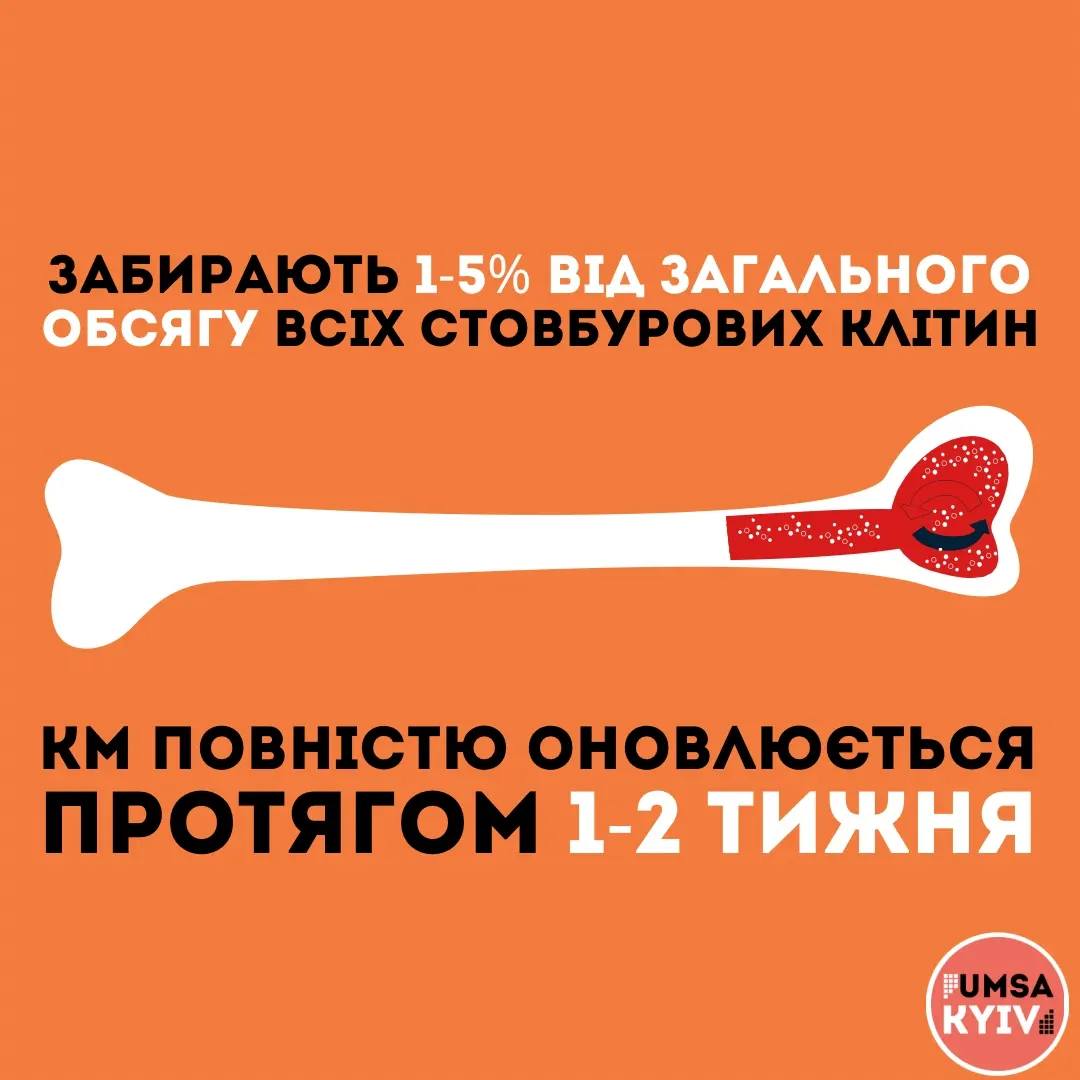
One to five percent of your stem cells are taken during these procedures. And they will recover quickly: within one or two weeks after donation.
Here are a few more arguments in favor of joining the Ukrainian register of bone marrow donors:
- patients are generally more likely to find donors in their own ethnic communities;
- neighboring Poland now has 1,800,000 donors in its registry;
- you will have another "relative". According to the terms of the register, the donation is made anonymously. Only your age, gender, and where you're from are made public. Then, by mutual consent, three months after the transplant, you can start correspondence with the person you helped. This correspondence is possible only through the registry, and it will also remain anonymous. And only after two years, you will be allowed to meet in person.
Another solution
If you are older or have contraindications, you can still help save patients needing a bone marrow transplant.
You can support the registry financially by donating through the website https://ubmdr.org/Home/DonateFunds or by signing up for cashback at Monobank.
Your funds will be used to pay for DNA tests for new donors.








